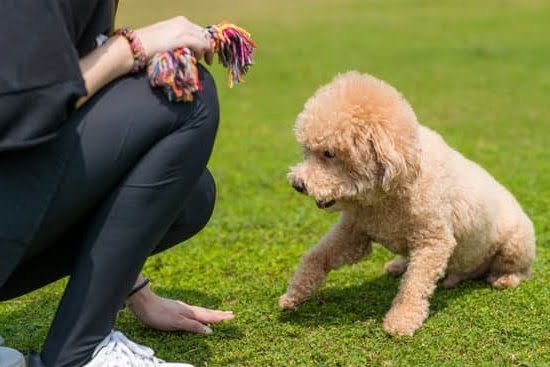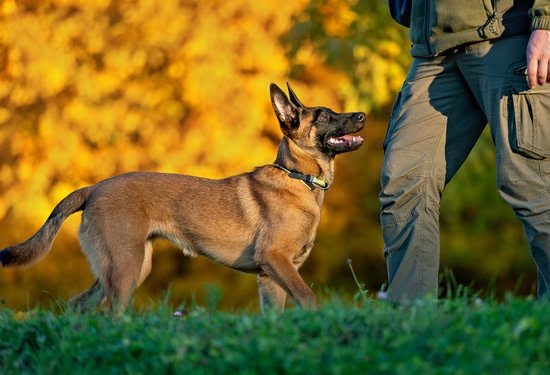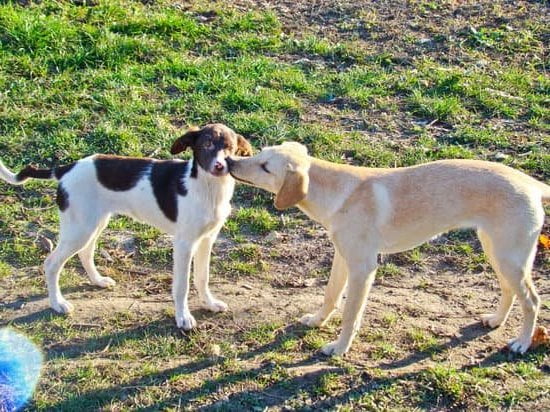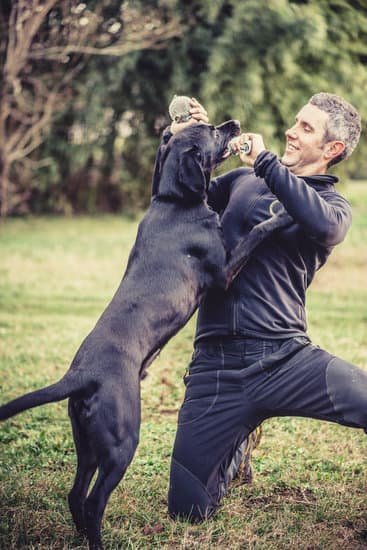Introduction
Yes, you can train a dog that is no longer a puppy. Training an older dog offers its own unique set of rewards. It requires patience and consistency–but with the right guidance and dedication, many of the same successes enjoyed when training young puppies can still be had when training an adult dog.
An adult dog is capable of grasping concepts in a different way than puppies do; they may have more impulse control and can often learn commands faster due to prior knowledge or experiences. An older dog who has never been trained before may challenge your creativity as you establish yourself as a leader and work through obedience corrections to ensure your pet learns how to follow direction.
Though there may be some difficulties associated with starting the learning process at an older age, there is also much satisfaction that comes from helping an animal discover new abilities and behaviors they were not aware they are capable of. Additionally, providing structure to an unstructured old dog gives them comfort-and if you focus on positive reinforcement instead of punishing failures, this will quickly become one of their favorite activities in life as well!
Establishing Positive Reinforcement Training Methods
Absolutely! Positive reinforcement training methods can be used to train dogs of any age. When training an older dog, it is important to understand that the dog has had a longer time to pick up bad habits than a puppy does. While puppies may need more supervision and repetition during their training process, adult dogs can still acquire basic commands in the same manner as puppies.
The key to successful adult dog training is consistent repetition of desired behaviors with rewards and praise offered as positive reinforcement. Specifically, treats are an effective form of reward while verbal praise can be used alongside more physical forms of affection such as petting or scratching behind the ears. Find out what your dog likes best and use those rewards while they obey your commands. Punishment should not be used – if the behavior is corrected quickly, you simply do not reward that particular behavior without resorting to punishment.
Training should also happen on a regular schedule for optimal results, even if it’s only for a few minutes at a time – fifteen minute sessions two or three times per day can be incredibly effective in achieving desirable behaviors from your adult pup. Adult dogs often love routine, so sticking to regular times for reviewing commands helps make learning easier and prevents boredom from setting in. Finally, practice patience with your adult dog – it takes consistency and persistence when working with an older pup but the rewards are totally worth it when you finally see them picking up exactly what you’re teaching them!
Understanding the Challenges of Training an Older Dog
Yes, it is definitely possible to train a dog that is no longer a puppy. Training an adult or senior dog requires patience and understanding of the unique challenges involved.
One challenge that may be encountered when training an older dog is that they may have developed their own habits and ways of thinking over time, which can make it difficult for them to comprehend new commands and instructions. This can lead to frustration for both the trainer and the dog. As such, it is important for trainers to keep in mind this challenge as well as recognize what methods will work best with their individual older pup. Techniques such as positive reinforcement, clicker training, and letting the pup take its time becoming comfortable with new instructions are all recommended for older dogs.
Another potential obstacle that some trainers face when working with an older dog is lack of established trust between owner and pup. In these cases, special care should be taken in order to demonstrate kindness, patience, understanding, and consistency during training sessions in order to build (or rebuild) a trusting relationship between owner and pet. Additionally, working on simple commands first before introducing more difficult tasks will help create a better foundation with an older canine companion. With proper guidance, compassion and lots of practice, there’s no reason why an adult or senior pup can’t learn just as much – if not more – than their younger counterparts!
Teaching Basic Commands
Yes, you can train a dog that is no longer a puppy. However, it will take more patience and understanding. Adult dogs have established habits and behaviors that can be difficult to change. Therefore, it’s important to start with basic commands and practice them over and over until your dog is able to respond appropriately in different situations. Teaching the command “sit” is definitely the easiest way to begin. Have your dog sit beside you then show him a treat or toy as motivation before saying “sit.” As soon as he sits, reward him immediately with praise or a treat while giving the verbal command “sit” at the same time. Repeat this routine several times per day for best results.
Other basic commands such as “stay” and “come” can also be taught with these same principles of positive reinforcement and repetition. When teaching your dog “stay”, start by having him sit next to you and give him the verbal order “stay”. Immediately follow up his obedience with verbal praise and reward him with a treat or toy if necessary. Then gradually increase the distance from which you’re asking your dog to stay before rewarding him for remaining in place until it becomes second nature for him to obey your command. Likewise, teach your pup “come” by shortening distances between you each time you call him over so he understands what behavior is required when hearing this command in different environments or distances away from home.
Using Treats and Other Rewards in Training
Yes, you can train a dog that is no longer a puppy using treats and other rewards. Treats provide an instant reward for desired behaviors and help the dog associate positive feelings with those behaviors. Other rewards, such as verbal praise or playtime, help to reinforce the desired behavior. It’s important to remember that training with treats isn’t meant to replace all types of training, but rather be used strategically in combination with other methods such as obedience classes or socialization classes. Treats should be immediately given after a successful performance while other rewards are progressive and come after several attempts at doing something correct. The use of treats will become less frequent over time as the dog starts to understand what behaviors are valued and accepted. Additionally, setting clear rules, consistency and positive reinforcement go hand-in-hand for effective positive reinforcement training when working with an older dog. With patience and consistency, you can effectively train any adult canine using treats and other rewards!
Introducing New Tasks and Activities to Your Dog
Yes, you can absolutely train a dog that is no longer a puppy. Training an older dog requires having patience as they may have already developed bad behaviors or habits. To start, create a consistent routine for your dog and make sure to provide plenty of positive reinforcement when they respond accordingly. Additionally, try introducing new activities and tasks to challenge them. Some things you may want to try include agility training with different obstacle courses, teaching them new tricks like ‘roll over’ or ‘shake’, or taking them on hikes, walks and runs for mental stimulation. Always ensure there are starkly distinct differences between playing sessions and training sessions where you’re working on reinforcing desired behaviors; it helps keep the process from becoming too tedious for both you and your pup. With dedication and consistency, training an older dog can be an incredibly rewarding experience!
Setting Boundaries and Introducing Discipline
Yes, it is possible to train a dog that is no longer a puppy. An older dog already has certain habits and behaviors that may need to be modified. In order to train a dog that isn’t a puppy, it is important to establish boundaries and introduce structure to their lives in their environment. The first step should be setting clear boundaries for the animal; communicating rules and expectations for behavior in any given situation including rewards for when the desired behavior is displayed. Reinforcement of those boundaries should also be given on a consistent basis. Additionally, introducing discipline into the mix will provide guidance and help shape behaviors over time. This can include positive reinforcement techniques such as verbal praise or treats, being firm but fair with reprimands, providing clear direction when needed, practicing calm assertiveness, and ensuring proper daily exercise and activity are all components of an effective training program for animals at any stage of life.
Practicing Patience, Perseverance, and Consistency
Yes, you can train a dog that is no longer a puppy. Even though puppies typically learn quickly and can pick up new concepts more easily than an older dog, training an older dog is still possible with patience, perseverance, and consistency. Although it will take more time and effort to teach a dog basic commands or alter problematic behaviors the same way you would teach a puppy, persistence is key. Praise should be used often to let the dog recognize and associate positive reinforcement with training. Additionally, keep the session short and highly rewarding by ending each session on a positive note (e.g. give special treats). Repetition of the same commands/concepts multiple times over several days needs to occur as well so that your dog will eventually master desired cues or skills.
Troubleshooting and Common Challenges When Training an Older Dog
Yes, it is possible to train a dog that is no longer a puppy. Older dogs may take longer to learn new behaviors because their brains are not as agile as those of younger dogs. In addition, it may be more difficult for them to retain training information and remember commands. Patience and consistency are key when training an older dog. Develop a relationship based on trust with the older dog and make sure they can feel relaxed while learning new things. Establish a regular routine so they understand what you expect from them. Offer lots of positive reinforcement such as treats, toys, and verbal praise when they demonstrate the desired behavior.
When troubleshooting with an older dog, observe their body language carefully. They may be showing signs that they do not want to follow a certain command or find certain activities challenging. In this case, try adjusting your approach by making training less intense and simplify the process until they can get used to it better and become comfortable enough to start following instructions again. If the process seems too overwhelming for the older dog, go back to basics and focus on simpler tasks first before advancing further into more intricate ones. Finally introduce distractions slowly so that the older dog can practice their newly learnt skills in more realistic settings.
Conclusion
Yes, you can absolutely train a dog that is no longer a puppy. The key to successful training of older dogs lies in the owner’s ability to identify and work with the dog’s individual learning style. Rather than using food or toys as rewards like you would for training puppies, owners of older dogs should try using positive reinforcement, such as verbal praise and affection. Doing so can positively shape the behaviors of an adult dog.
Furthermore, it is important to structure and maintain a consistent routine for your older dog. Behaviors associated with that routine will become second nature over time, making the commands easier for the dog to understand. Additionally, shorter sessions, shorter distances and smaller goals are important when training an older dog; this could help prevent any potential frustration that may arise from prolonged more difficult tasks.
Finally, patience is essential when it comes to training an older dog, since they may not learn at the same speed as puppies do. As such, owners should be prepared to take their time and make adjustments as needed; doing so can establish a better bond between an owner and their older dog while also promoting optimal learning results.

Welcome to the blog! I am a professional dog trainer and have been working with dogs for many years. In this blog, I will be discussing various topics related to dog training, including tips, tricks, and advice. I hope you find this information helpful and informative. Thanks for reading!





